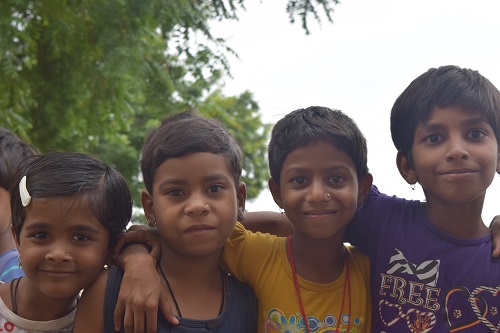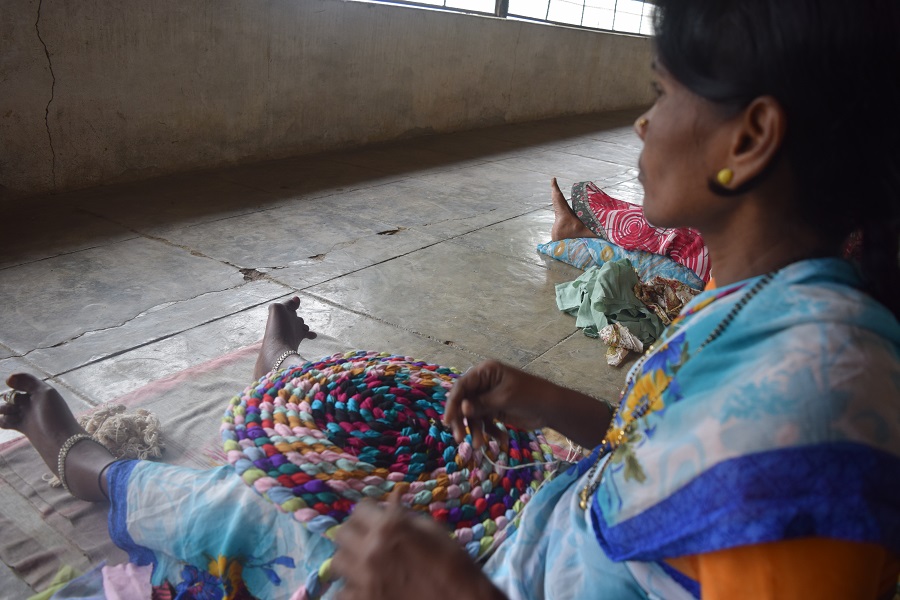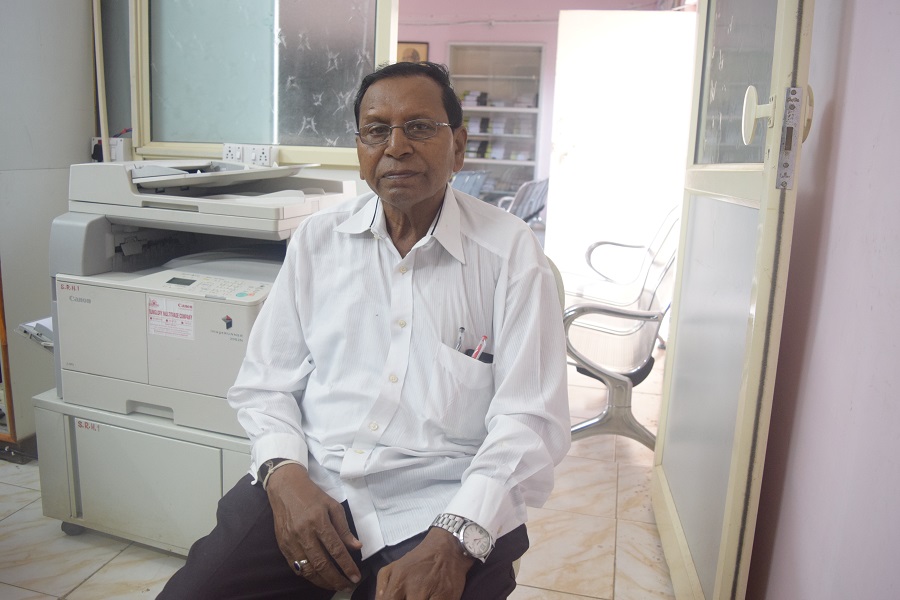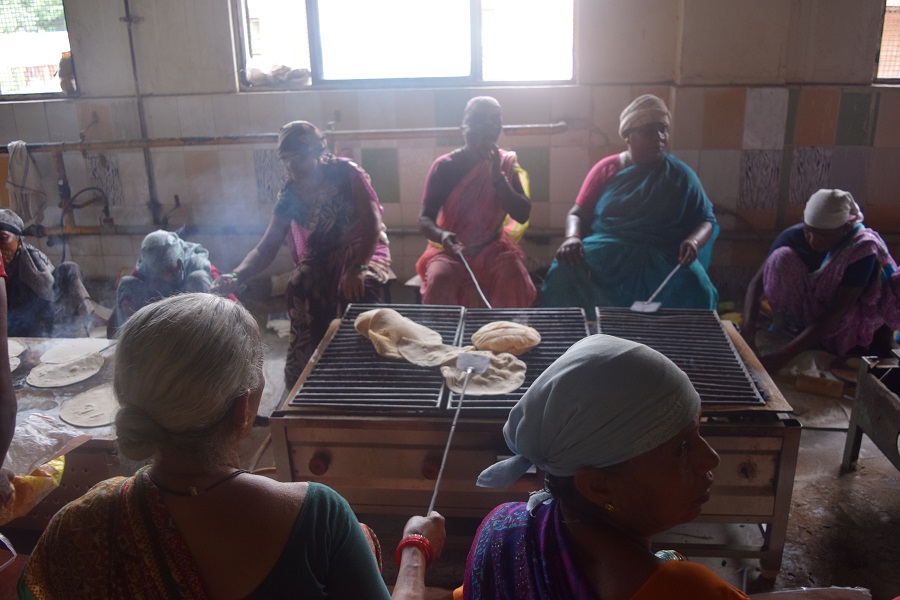By
Neha Mehrotra
On August 9, schools and colleges in Anandwan, a village in Vidarbha Maharashtra, celebrated Tribal Day by giving students a holiday on this otherwise-working Thursday in lieu of what in 1994, the UN declared to be ‘International Day of the World’s Indigenous People’. While children in surrounding Warora went about their day as usual, Anandwan’s educational institutions experienced a rare lull as children from primary to college level stayed home, wishing each other ‘Happy Tribal Day’ when they happened to meet.
Awareness of this kind is not an exception in Anandwan, but a daily occurence, perhaps having something to do with the unique way in which this village came to be established. The village started off in 1949 as an NGO, Maharogi Sewa Samiti (MSS), for the free treatment and rehabilitation of leprosy patients, and was initially little more than a commune comprising its founder Murlidhar Devidas Amte—widely known as Baba Amte—his wife Sadhna, his two sons Vikas and Prakash and six leprosy patients, not to mention a lame cow and a capital of just 14 rupees.
As the number of leprosy patients increased, MSS was registered as an official society in 1951 and with the help of district collector R K Patil and barrister Barlinge—close friends of the Amtes—the NGO was allotted 50 acres of barren, uncultivated land by the Madhya Pradesh government four km from the village of Warora, close to the Nagpur-Chandrapur road diverging from Chimur. The board of trustees of the organization at the time consisted of R K Patil, Laxmichand Bora, Gulabchand Gothi, Mithmal Bora, Phulchand Baid, Dr Vaze, Ramkrishna Milmilwar, Mahadev Pawade, Mahmadbhai, Milapchand Sipani, Jaganjeet Sarda and Kannamwar.
As the population of Anandwan increased, Baba Amte thought it prudent that the NGO take advantage of programs and schemes run by the government. So he created a proposal to turn this hamlet into an official village, and in 1991, the government legitimised this proposal by granting Anandwan the status of a Gram Panchayat. “It’s a very unique structure”, said Gautam Karajgi, project head at Anandwan and husband of Baba Amte’s grand-daughter Sheetal Amte. “In other places, typically there is a Gram Panchayat and in one corner of the village, you will see an NGO trying to do some work. But here, it was the NGO that gave birth to the Gram Panchayat. So we find it very hard to explain to people what Anandwan is and how it came about, because people say, but how is that possible?”
Leprosy patient knitting a foot mat
Today, the commune has grown to include approximately 4,000 residents, and is spread out over 500 acres. Free treatment and rehabilitation of leprosy patients is no longer the driving force behind Anandwan but is now merely one aspect of the village which, under the steerage of MSS, has branched out to establish sister initiatives such as an orphanage for homeless children, a home for the aged and schools for the blind, deaf and dumb. It has also expanded its scope of livelihood opportunities for those residing herein, where agriculture, dairy farming, handloom and powerloom industries, woodwork and handicrafts, metallic industry, art work and a self-run printing press are simply a few of the numerous income generators for the village. Residents work in any one of these departments in exchange for free-of-cost food, housing and healthcare.
Take the case of Kauruv Sutte, who works as a nurse at Anandwan’s Sita Raman Leprosy Hospital. “I was a leprosy patient earlier”, says Sutte. “I came here in 1975. I had actually wanted to join the army, but they discovered a spot on my body and told me to get it checked. I first tried to get treatment at Gandhi Memorial Leprosy Foundation, where they gave me Dapsone, a single drug treatment. But after a few days, I was diagnosed with jaundice and had to stop taking the medicine. So when someone suggested coming to Anandwan, I took it up. Here, Dr. Vikas Amte treated me with Multi Drug Therapy (MDT). The treatment lasted for an integrated period of 26 months, at the end of which I was cured. After that day, I have continued to work at the hospital here”, he said.
Former leprosy patient Kaurav Sutte who now works as a nurse at the leprosy hospital
Patients are admitted to Anandwan’s Leprosy Hospital free of charge, the only requirement being they have to consent to stay for an integrated treatment period of 12 months. Most patients choose to prolong their stay even after their treatment is over, but a year long commitment is the minimum prerequisite. “This is a must since that’s how long it takes to wholly cure the disease”, said Sutte.
During their stay at Anandwan, patients go to work every day as per their capacity. The village starts buzzing at 4 am, with the first round of tea being served at 5:30. After medicine and bandaging from 6-8 am, the patients go about their daily work allotment. Some till the fields, others scour the streets with a broom in hand, still others work in the metal, handicraft and arts departments as per their interest. 12-2:30 in the afternoon is reserved for lunch and afternoon siesta. Work resumes at 2:30 to go on till 6 in the evening. “Baba Amte strongly believed in the revolutionary potential of work, saying that work builds and charity destroys. At Anandwan, we don’t just treat patients. We help them develop confidence so that they can choose to rebuild their lives”, says Dr Sheetal Amte, the third generation of the Amtes.
Women cooking the mid day meal
In 2017, Anandwan, modelling itself along the lines of Modi’s Smart City initiative, started working towards transforming itself into India’s first Smart Village. “‘Smart’, for us, is not a prefix. It is an acronym, which stands for Sustainable, Measurable, Affordable, Replicable and Technology driven”, said Karajgi. According to this philosophy, a village, in order to be self-sufficient, has to excel along four simultaneous frontiers: Livelihood, Healthcare, Institutionalisation and Sustainability. “And Anandwan is currently manning all frontiers”, concluded Karajgi.
In addition to livelihood and healthcare, the village is the only one in all of Warora which has access to college education within its premises, chief among them being Anand Niketan Science, Arts and Commerce College, Anand Niketan College of Agriculture and Anand Agriculture Polytechnic, all established and run by the MSS in affiliation with the government. Anandwan has also been recognised for its renewable energy initiatives by the ‘Innovative Energy Project’ award for the Asia Subcontinent Region, presented to Baba Amte’s son, Vikas Amte, and Gautam Karajgi in 2016. The village uses solar energy panels and biogas for most of its energy requirements which has reduced reliance on fossil fuels by 70%, the number of LPG cylinders used per day going down from 52 to 18.
However, though this village might seem ideal, it is not without its share of problems. “As of now, we have just four full time doctors: Dr Vikas Amte, his wife Dr Bharati Amte, Dr Sheetal Amte and Dr Vijal Pol. Outside doctors don’t want to come here since the pay is minimal. Earlier, at least doctors used to come to Anandwan temporarily to organize camps and workshops, but this has stopped as well since the government declared that no non-residential doctor can hold camps here”, said Sutte. In addition to this, agriculture, which was once widespread and flourishing, has witnessed a significant drop due to recent droughts. “Agricultural production has fallen manifold”, said kitchen in-charge Ganesh Tikkat. “Earlier, more than half the food cooked and supplied at Anandwan came from our own farms. But now, most produce is bought and transported from Nagpur”, he said.
In spite of these difficulties, what keeps the village going is the commitment to hard work, visible in all its patients and volunteers, a legacy handed down from the founder of the village, Baba Amte, who defined himself as a karmyogi all his life. Tikkat himself came to Anandwan from Mumbai for a brief visit five months back, but after a week here, decided to drop his entire life in the city and move to Anandwan as a permanent volunteer. There are many others like him, whose staunch commitment to this village seems unfathomable. “I don’t understand it myself. Why do these young men and women choose to drop their whole lives and come here, where we’re not even offering them money? It’s something that has always baffled me”, said Karajgi. “But it really restores your faith in people”.
Neha Mehrotra
I am a third year undergraduate student at Ashoka University, India, majoring in English and Journalism. As of now, I don’t know what I like more, literature or the media but I’m hoping to figure it out soon. Until then, I’ll try my best to keep dabbling in both.






No Comments Yet!
You can be first to comment this post!